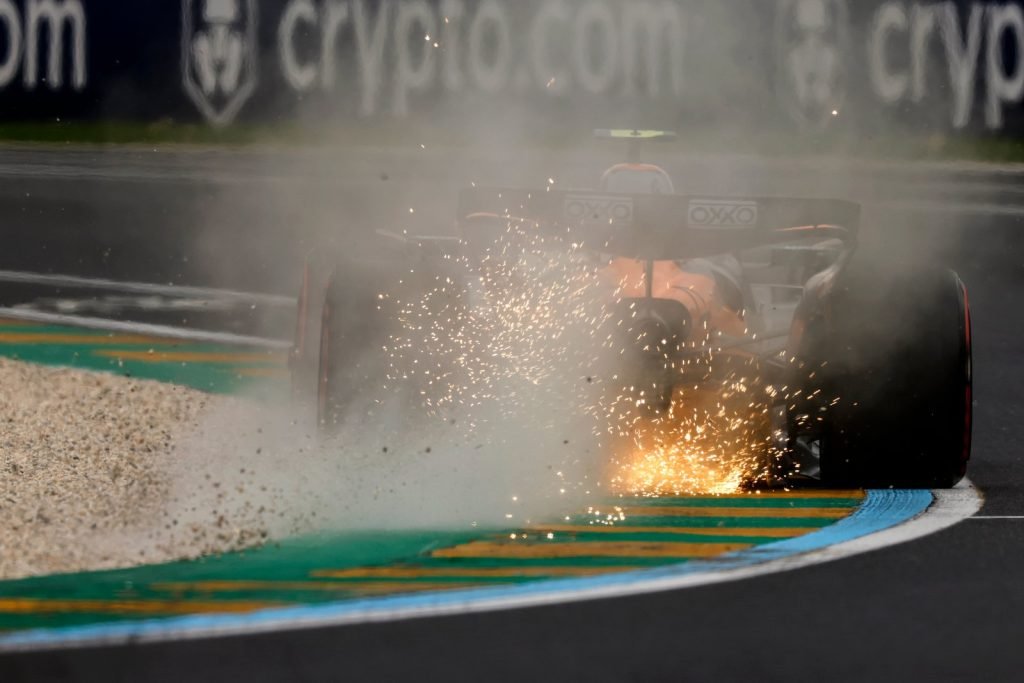The FIA has announced that a stricter rear-wing deflection test will come into effect from the Chinese Grand Prix onwards.
This decision follows the season-opening Australian Grand Prix, where teams were asked to use cameras during practice sessions to capture the on-track deformations of their cars.
After reviewing the footage, the FIA determined that a more stringent test is necessary for the upper rear wing, though it confirmed that all cars in Melbourne complied with regulations.
What does the FIA statement say?
In an official statement, the governing body explained:
“As has been previously communicated, between the end of the 2024 season and the start of the 2025 season, the FIA exercised the authority it is granted under Article 3.15.1 of the Technical Regulations to introduce either new or more challenging load-deflection tests for the front wing (from Race 9, Spanish Grand Prix), the upper rear wing, and the beam rear wing.
“In addition, the FIA requested to the teams to use cameras in Free Practice Sessions to monitor the on-track deformations exhibited by the cars during the Australian Grand Prix.“
After cross-referencing the video analysis with static deflection tests carried out in Melbourne, the FIA determined that the current regulations should be tightened. The new test will apply to the upper rear wing from the upcoming Shanghai race.
What will change for the Chinese Grand Prix?
The statement read furthermore:
“Having analysed footage from the rear wing deformations combined to the static deflections measured inside the FIA garage in Melbourne, the FIA has concluded that sufficient grounds exist for a tougher test to be introduced from the forthcoming Chinese Grand Prix on the upper rear wing.
“More specifically, Article 3.15.17, introduced in 2025, states that if 75Kg of vertical load is applied on either extremity of the rear wing mainplane, the distance between the mainplane and the flap (also known as “slot gap”) must not vary by more than 2mm. From the forthcoming Grand Prix in Shanghai, this limit will be reduced to 0.5mm. Due to the short notice for Shanghai only a tolerance of 0.25mm will be added to this new limit.
“The Teams were informed of this revised test early Monday 17th of March.
“The FIA wishes to further confirm that during the Melbourne event all cars tested against the requirements of Article 3.15.17 and found to comply, therefore all cars raced in Melbourne were deemed to be legal.”
In summary, the FIA has introduced a stricter rear-wing deflection test from the Chinese Grand Prix onwards, following an investigation after the Australian Grand Prix that confirmed all cars were legal but warranted closer scrutiny moving forward.
The Chinese Grand Prix is set to take place from March 21-23.



